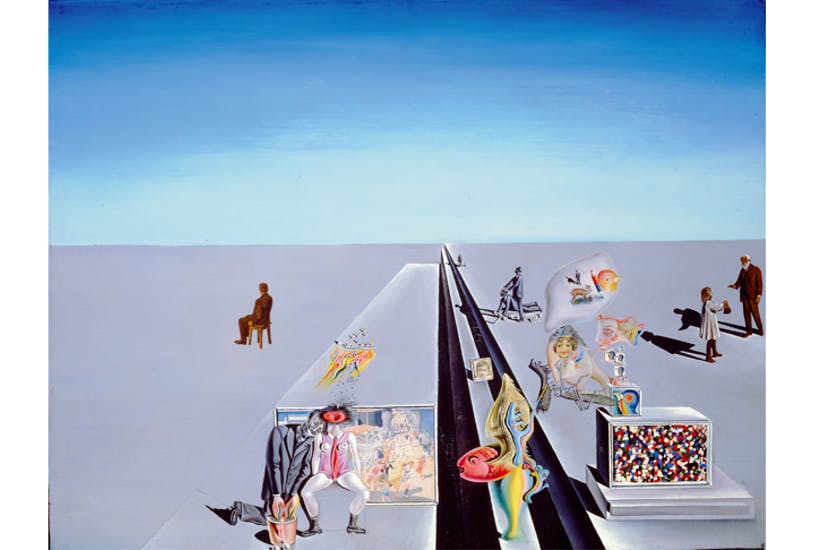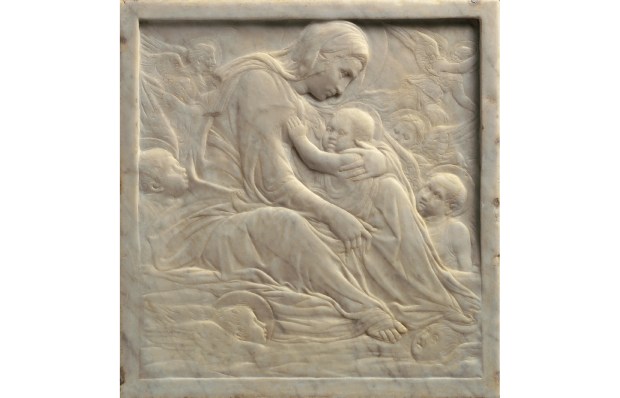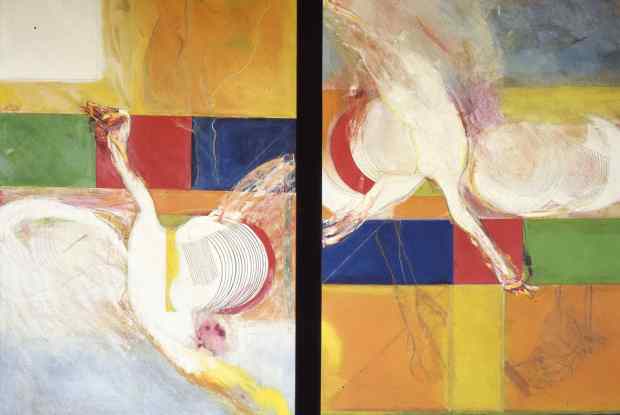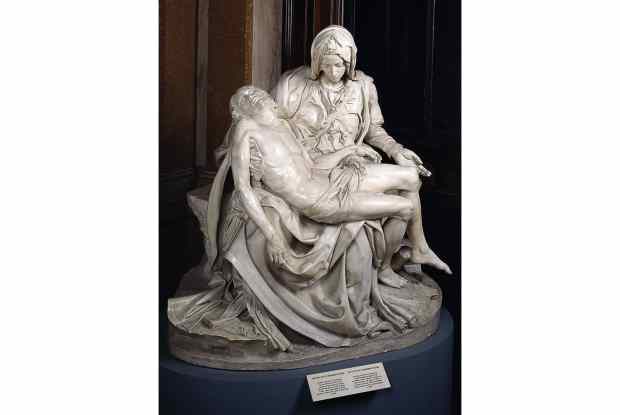During a panel discussion in 1949, Frank Lloyd Wright made an undiplomatic comment about Marcel Duchamp’s celebrated picture of 1912, ‘Nude Descending a Staircase, No. 2’, in the presence of the artist. ‘I am sure he doesn’t himself regard it as a great picture now.’ At this Duchamp bridled, exclaiming in his excellent English, ‘I beg your pardon, sir!’ However, the architect had a point, as the exhibition Dalí/Duchamp at the Royal Academy bears out. I came away from it reflecting that Duchamp wasn’t a very good painter.
This is not the point, obviously, that the RA intended to make. The idea was to reveal how much this improbable pair — the progenitor of conceptual art and the flamboyant showman of surrealism — actually had in common. It’s true they were good friends. On show there are letters and photographs of Duchamp, clad less elegantly than usual in shorts, visiting Dalí in his Catalan coastal lair at Cadaqués. In artistic terms, though, the connection isn’t quiteso clear.
One difference is that Dalí remained pre-eminently a maker of pictures —although he did come up with one memorable surrealist object, his ‘Lobster Telephone’ (1938). Duchamp, in contrast, gave up painting quite early on and even his celebrated found objects — the porcelain urinal turned upside-down, signed and entitled ‘Fountain’ (1917), the ‘Bottle Rack’ (1914), the snow shovel wittily dubbed ‘In Advance of the Broken Arm’ (1915) — belong to his youth. Or rather the items originally ‘found’ did, but those were slung out as worthless clutter, shortly after Duchamp discovered them, by various people (including his sister). The ones we see — ironically, in the circumstances — are all meticulously hand-crafted facsimiles.
These, of course, have been enormously influential, effectively launching the notion that an artist’s thoughts and decisions are more crucial than the marks of the painter’s brush or the sculptor’s chisel. Duchamp himself, however, did not go on to create a great oeuvre of conceptual art.
Nor did he quite — as he claimed — give up art in favour of chess. But his output was small. Much of his most important work fits into one room at the Philadelphia Museum of Art. Duchamp also recycled his old ideas, in the ‘Boîte-en-valise’ (or box in a suitcase) of 1935–1941, which contains miniature versions of his early paintings and ‘ready-mades’.
Many years were spent on ‘Étant donnés’ (1946–66), a creepy peepshow in which one peers through a hole in a door to see the naked body of a woman, perhaps dead or murdered. His masterpiece, ‘The Bride Stripped Bare by Her Bachelors, Even’ (aka ‘The Large Glass’), of 1915–23, is more impressive, but still quite odd (Richard Hamilton’s reconstruction is exhibited here).
‘The Large Glass’ depicts various objects that vaguely suggest Edwardian kitchen apparatus or hardware — one being a chocolate grinder, the subject of one of Duchamp’s most successful earlier paintings. When you look at this transparent surface, these enigmatic oddments seem suspended in space.
‘The Large Glass’ seems to symbolise male and female desire — though few would guess that from looking at it and interpretation is not made easier by the artist’s voluminous and deliberately confusing notes. A preoccupation with matters erotic, then, is one thing Duchamp and Dalí had in common. At first glance, it isn’t easy to see many others.
Dalí was a brash self-advertiser. After meeting him and his wife Gala, Andy Warhol noted: ‘It’s like being with royalty or circus people.’ Duchamp, on the other hand, was cerebral, elegant, witty and reserved. While Duchamp spent years tinkering with ‘Étant donnés’, his Catalan friend was turning out large quantities of increasingly slick, glossy pictures. Dalí’s ‘Christ of Saint John of the Cross’ (1951) is a renowned contribution to a very unDuchampian genre, modern religious art.
Nonetheless, they shared something else: a determination not to compete with other, better painters. Duchamp’s ‘The King and Queen Surrounded by Swift Nudes’ (1912) reveals that in his youth he was a second-string follower of cubism (with a dash of Italian futurism thrown in). It’s not a bad painting but as Wright implied of the stylistically similar ‘Nude Descending’, it’s definitely not a great one. Its surfaces are too hard and dry, the whole effect too slick. None of Duchamp’s works — as art — are in the class of Picasso’s ‘Demoiselles d’Avignon’ or Matisse’s ‘Red Studio’.
It was a sensible decision on his part to give up painting in favour of something he was better at: thinking. Vastly influential as his ready-mades were, however, they aren’t all that much fun to look at.
In a way, it’s just the same with Dalí — the ideas are what count. Increasingly, as time went on, his actual painting tended to be glossily kitsch, and deliberately so. He said that if he’d been able to takecolour photographs of the fantastic ideas in his head, he’d have done that instead.
Got something to add? Join the discussion and comment below.
Get 10 issues for just $10
Subscribe to The Spectator Australia today for the next 10 magazine issues, plus full online access, for just $10.
You might disagree with half of it, but you’ll enjoy reading all of it. Try your first month for free, then just $2 a week for the remainder of your first year.














Comments
Don't miss out
Join the conversation with other Spectator Australia readers. Subscribe to leave a comment.
SUBSCRIBEAlready a subscriber? Log in